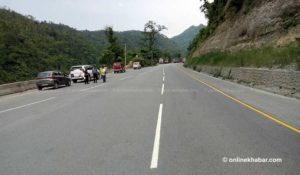
On December 22, Surya Dhakal was travelling on the Butwal-Narayangadh road section in his car. He had just crossed the uphill of Daunne when he became stuck in a traffic jam near the top of the hill. He remained stuck in the jam for half an hour.
“If someone ever asks how the road to hell looks, show them this road. Travelling on this road is a joke,” says Dhakal.
The expansion of the Butwal-Narayangadh road section has been underway since 2018. However, after five years, there is little progress to show for the efforts, and the road appears more damaged than when the project initially began.
The construction contract for the expansion of this road, facilitated by a Rs 17 billion loan from the Asian Development Bank (ADB), was awarded to the China State Engineering Corporation Company through the Department of Roads. As per the terms of the contract, the road expansion was supposed to be completed by February 2022. However, after five years, only 35 per cent of the work has been completed.
“In the name of road expansion, the government and contractor have made this road an experimental lab,” says Prashant Majhi, who was travelling from Kakarbhitta to Butwal.
Lackadaisical project
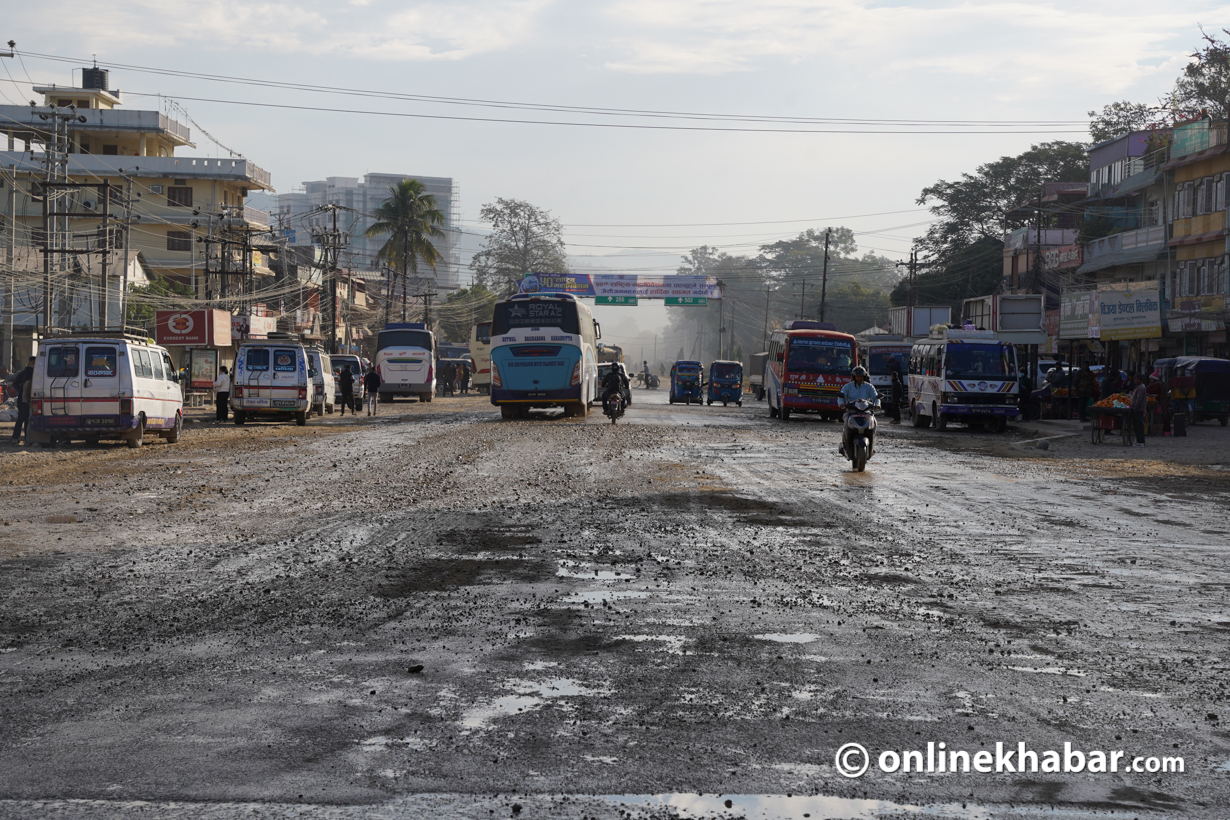
Construction workers and machinery are seldom seen actively working on this road. According to Majhi, if the public protests, authorities temporarily patch up a 50-100 meter stretch of the road to manage the situation.
The road also experiences frequent vehicle breakdowns and accidents. Travelling the 113 km distance takes approximately six hours due to the presence of potholes and the cluttered placement of construction materials.
“For the last five years, no improvements have been made in the road,” he says.
Majhi says that the road is especially challenging for smaller vehicles due to poor ground clearance, likening the task of crossing it to winning a war.
“Vehicles with even good ground clearance struggle. This road is an example of how progress is taking place in Nepal,” said Majhi.
Breaking back

Sonam Tamang, who took a reserved vehicle to reach Butwal, expresses regret, feeling as though it was a mistake to travel such a poorly maintained road.
“Enough is enough,” he says. “The road is so dusty that no one can breathe properly here. This road is hell for children and the elderly.”
However, for the people of Karnali, Sudurpaschim, Lumbini, and certain areas of Gandaki province, there is no alternative to the Butwal-Narayangadh road. The dismal road conditions have left them feeling frustrated and angry.
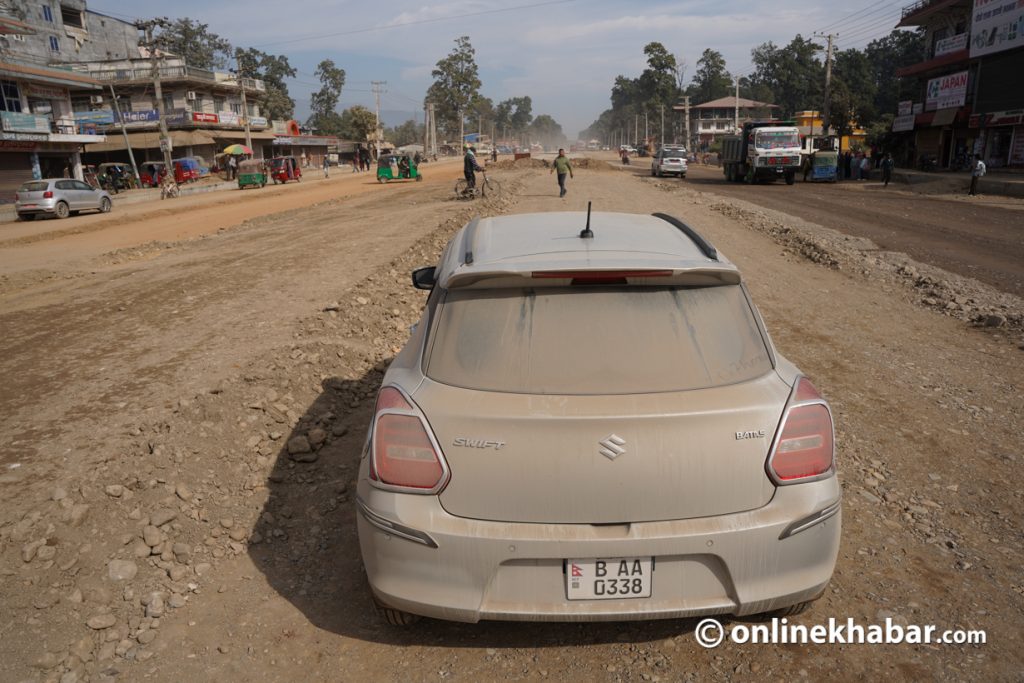
Rajendra Kumar Rai, an elderly citizen, has numerous complaints about the hardships he experienced while travelling to Butwal via the Butwal-Narayangadh road section.
“All I could think of was if we would get into an accident due to the road conditions. My body aches and I have dust all over my body. This road is dangerous for public health,” says Rai.
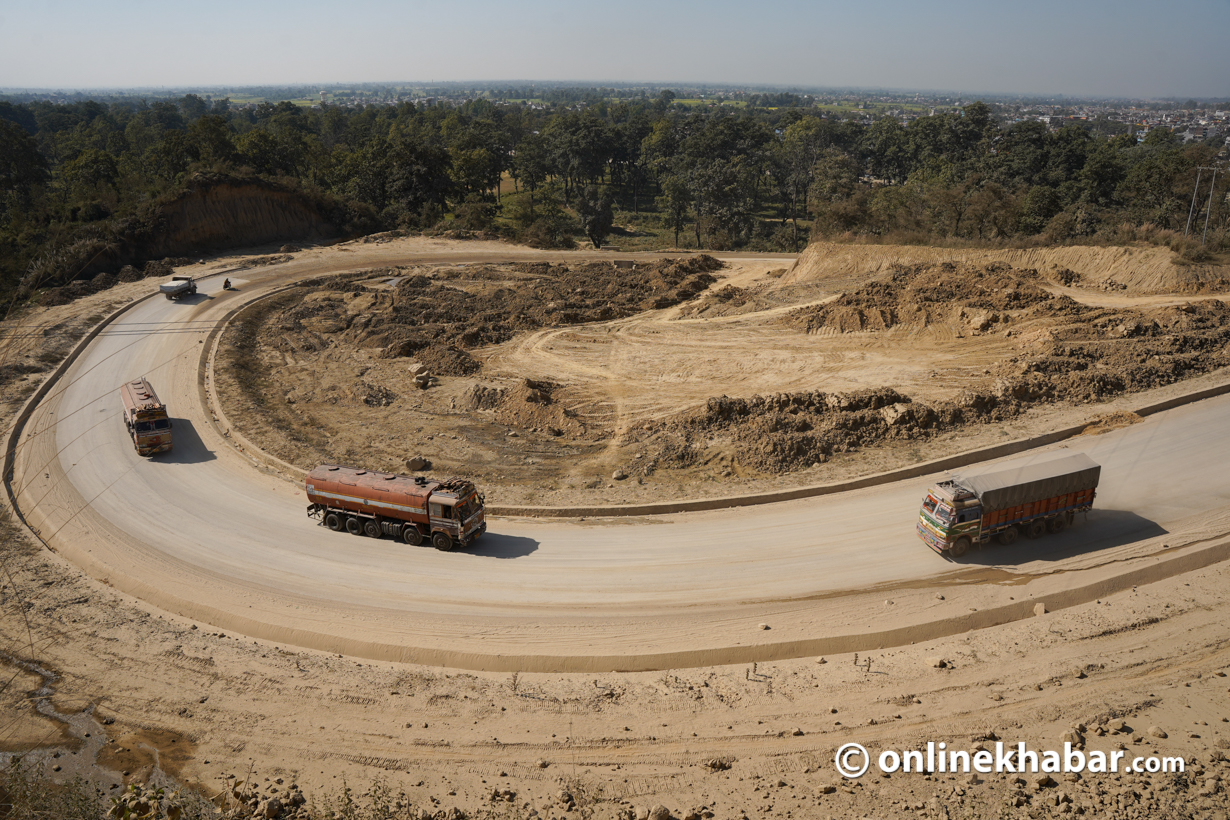
Kedarmani Tripathi, who drove from Chitwan to Butwal, describes his journey as a ‘life-threatening experience.’ This is thanks to the many uncovered potholes that act as a death trap for those travelling on motorbikes and smaller cars.
The poor road condition has not only affected the locals but also left tourists visiting from India frustrated. Suprabal Shrivastav from Jainagar, who travelled the route in his car, describes it as his most challenging journey.
“I regret bringing my car. This is one of the worst roads I have travelled on. Had I known about this, I would have flown in. I don’t know how I will get back to Bihar,” says Shrivastav.
The locals say the contractor’s inappropriate excavation has led to a substandard road condition. Mohan Mijar, who frequently drives from Kathmandu to Butwal says the poor road condition poses a constant risk of accidents at every step.
“I’ve seen many motorbikes slip and crash. Cars and trucks along with the busses are also at risk of crashing,” says Mijar.
Dust to dust
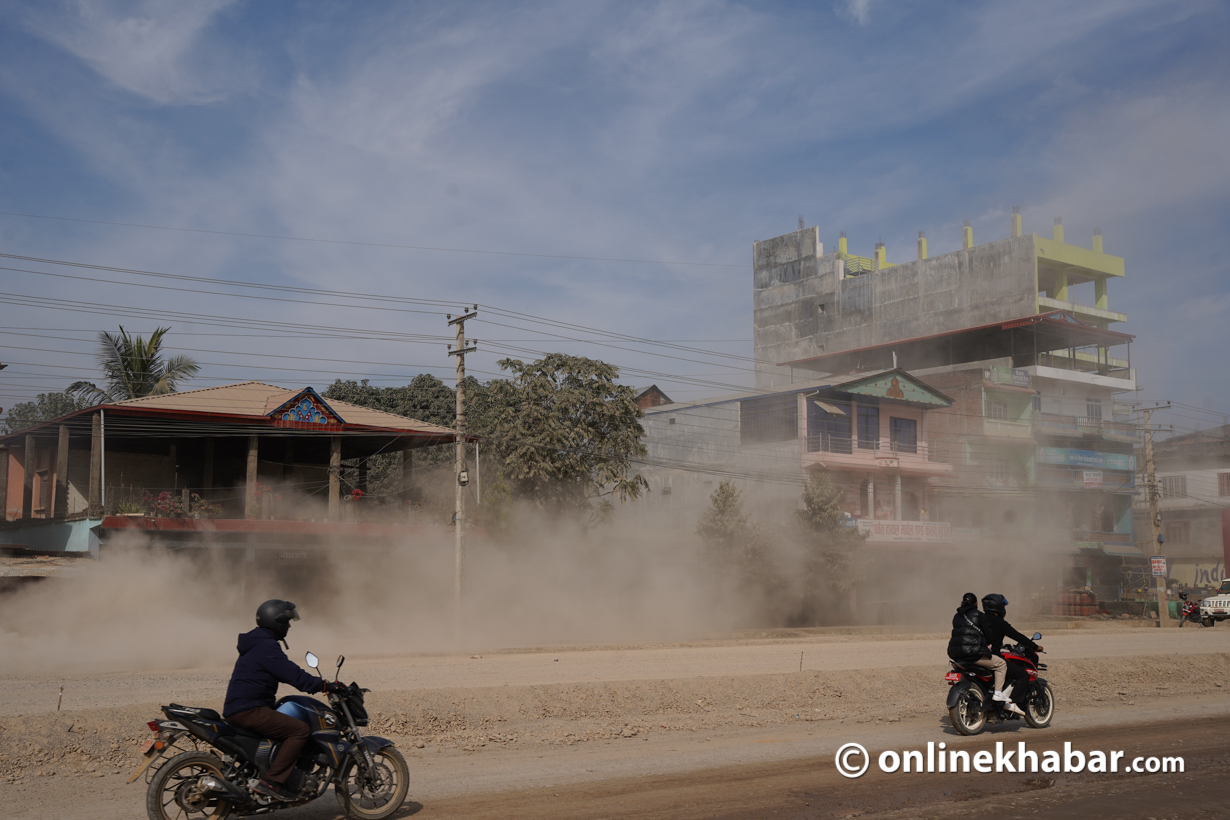
Due to the continuous dust, motorbike riders and their passengers resort to wearing raincoats or plastic coverings to shield themselves. Occasionally, the contractor attempts to control the dust by applying water to the road; however, this creates a slippery surface with red clay, exacerbating the challenges for travellers.
Raju Adhikari, who embarked on a journey from Sanauli to Lamjung on a motorbike, describes his experience as nothing short of torture.
“It seems like no one cares,” says Adhikari.
The contractor and the Department of Roads seem indifferent to safety measures for road construction. Many individuals who must travel this route are expressing concerns about the government’s apparent lack of attention to the issue.
“The president, prime minister, ministers, and leaders do not have to endure this route. If they ever have to, they’ll travel in a luxurious vehicle,” says Kalpana Tamang, who was travelling with her newborn baby. “This, perhaps, explains their indifference to the situation.”
She has urged the leaders to travel like a layman to experience what the locals have to endure every day.
“Why do locals have to endure this hell and not leaders?” she questions.
All photos: Shankar Giri







